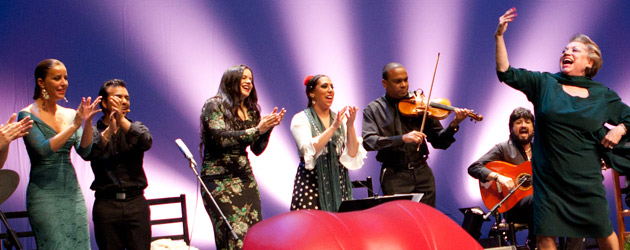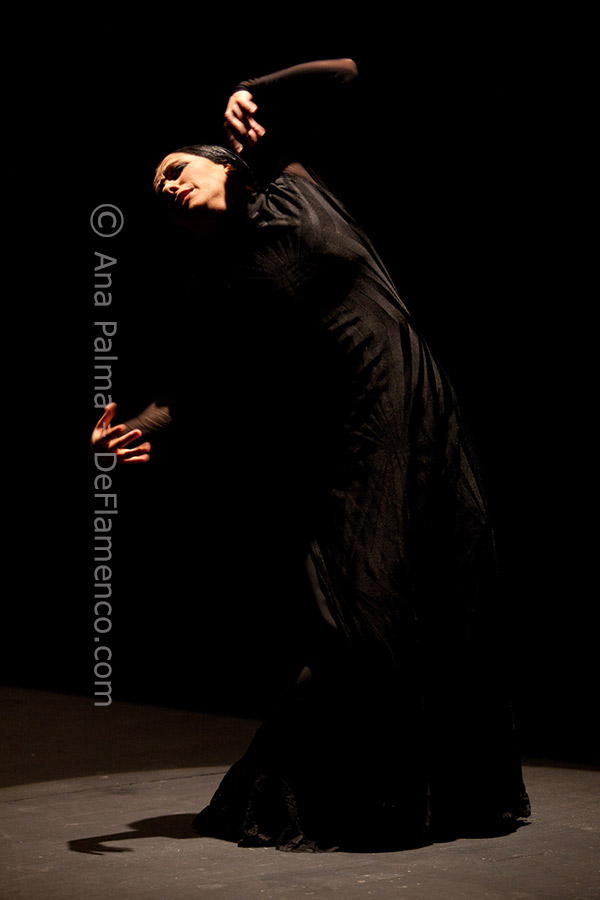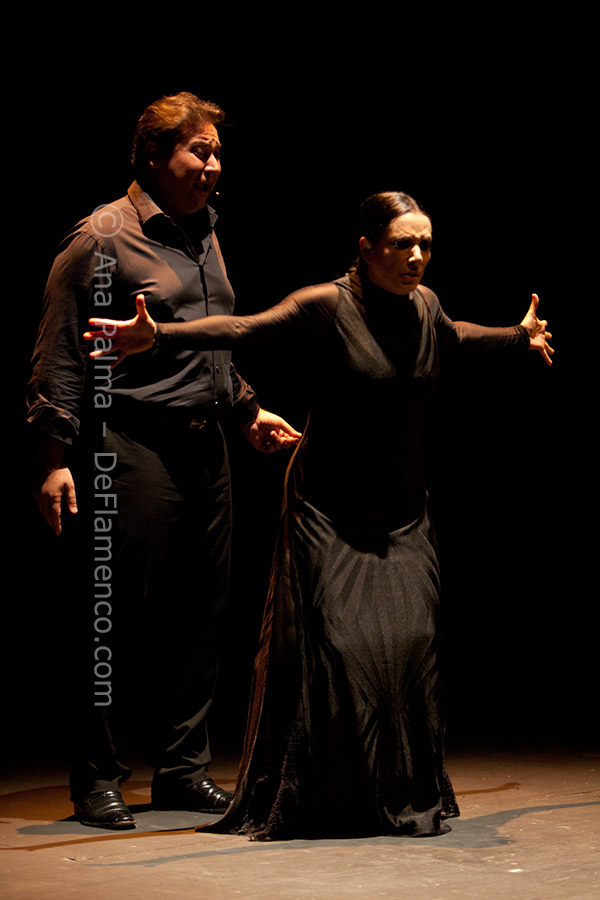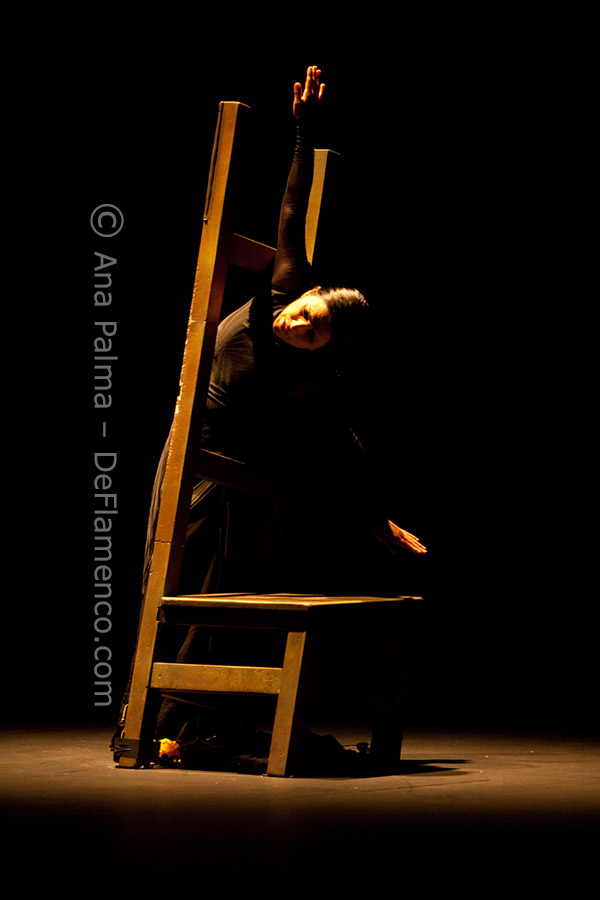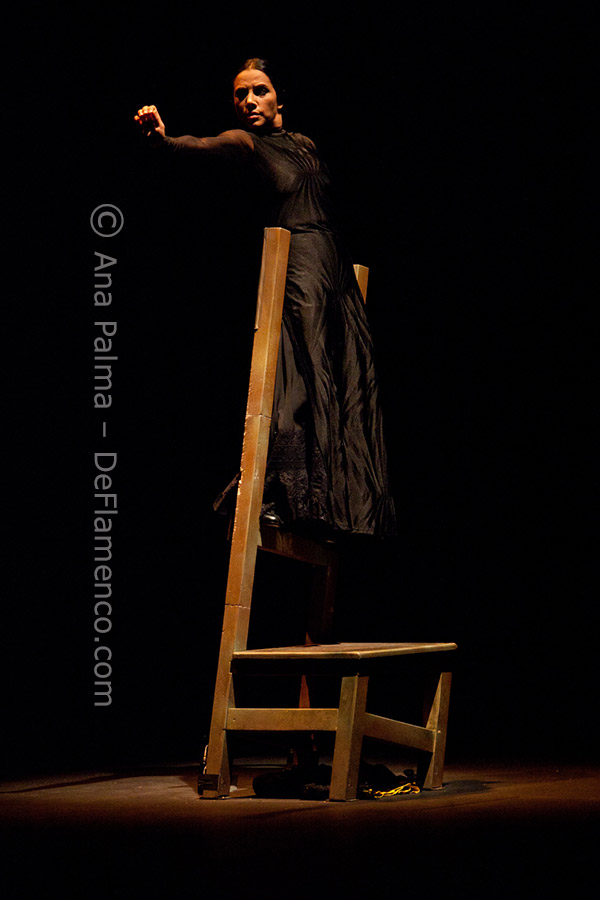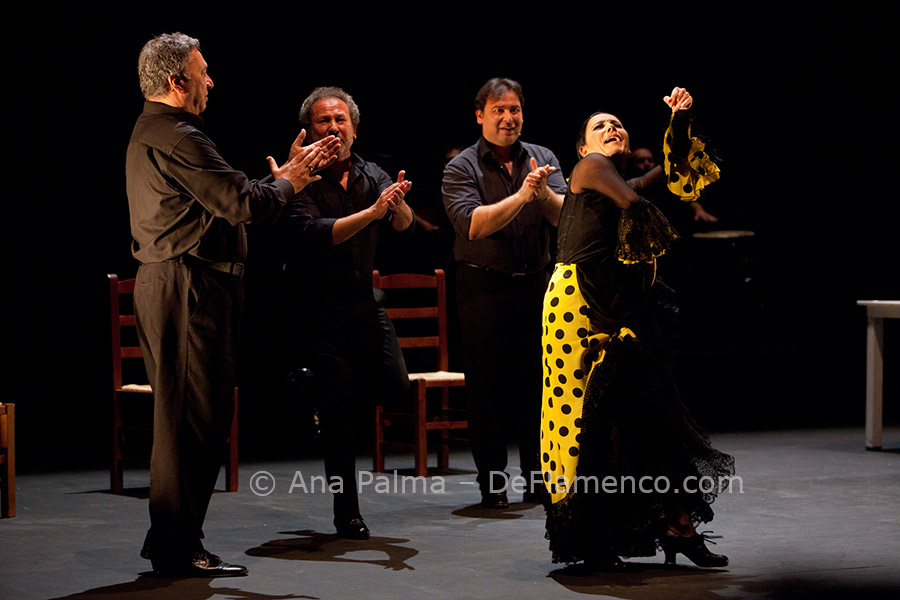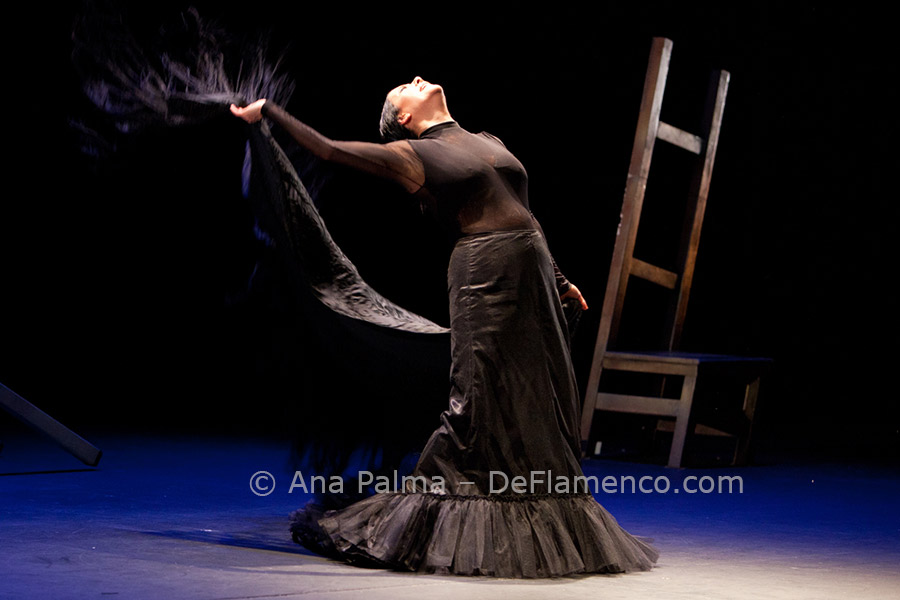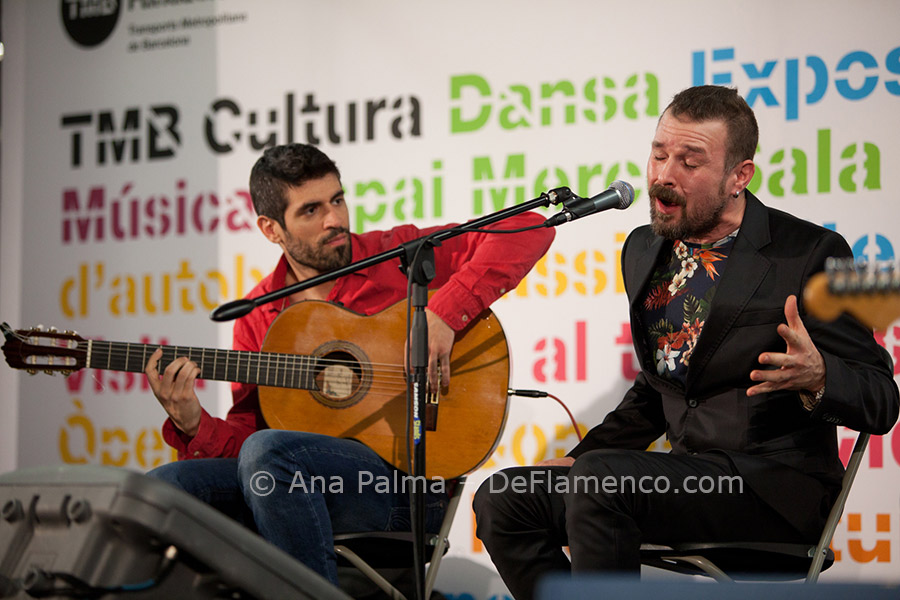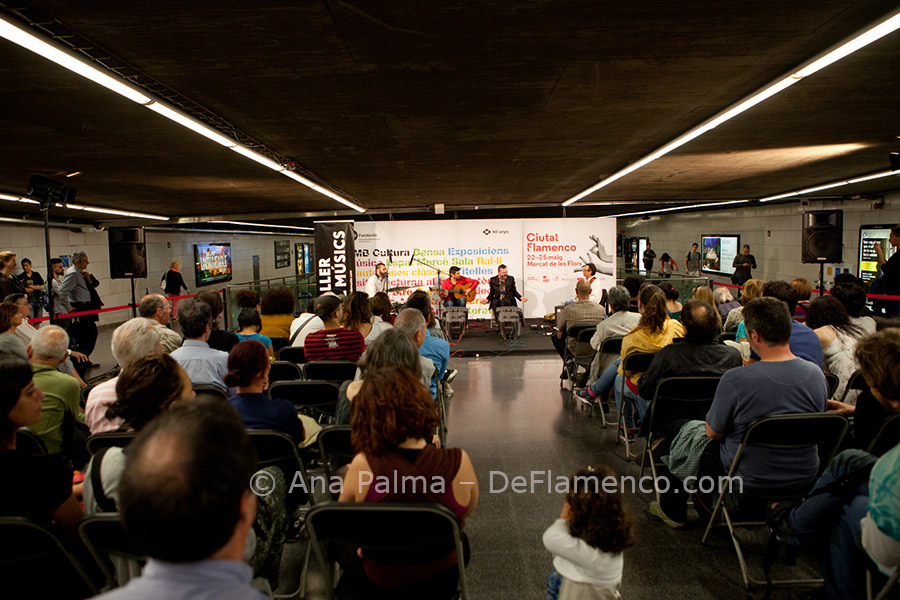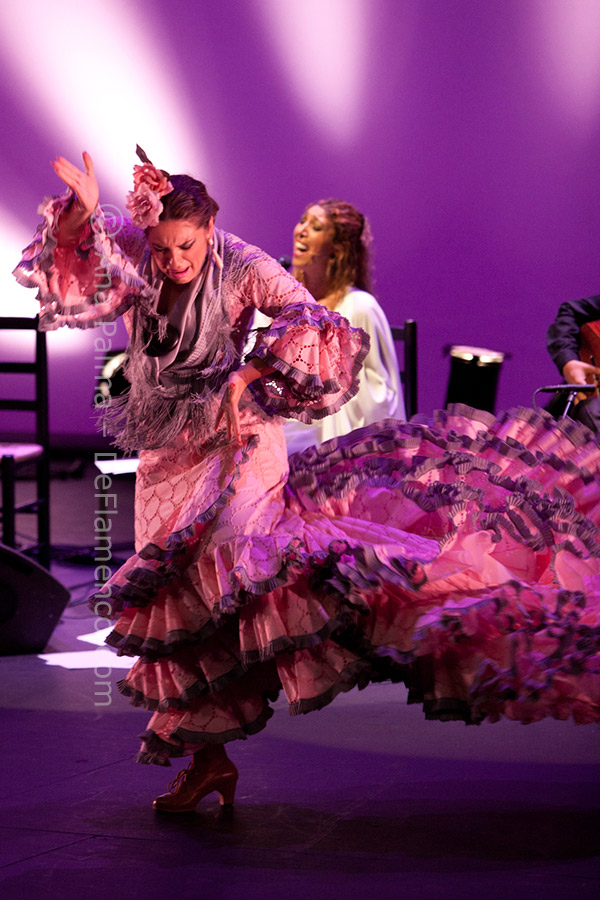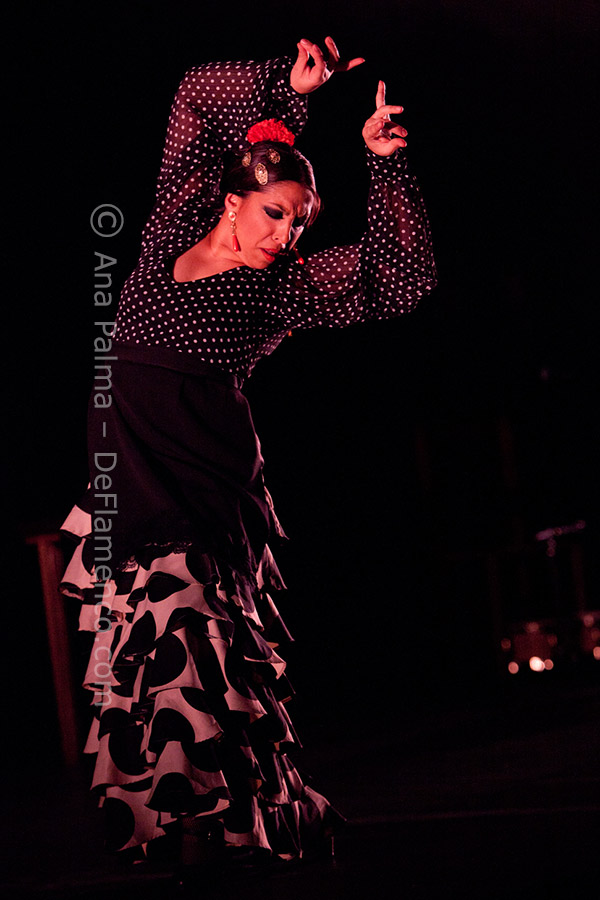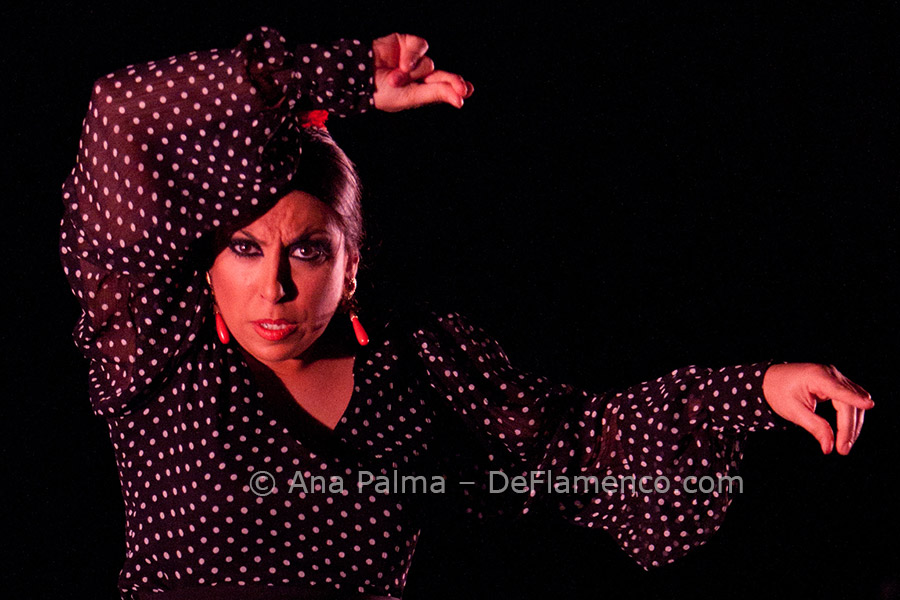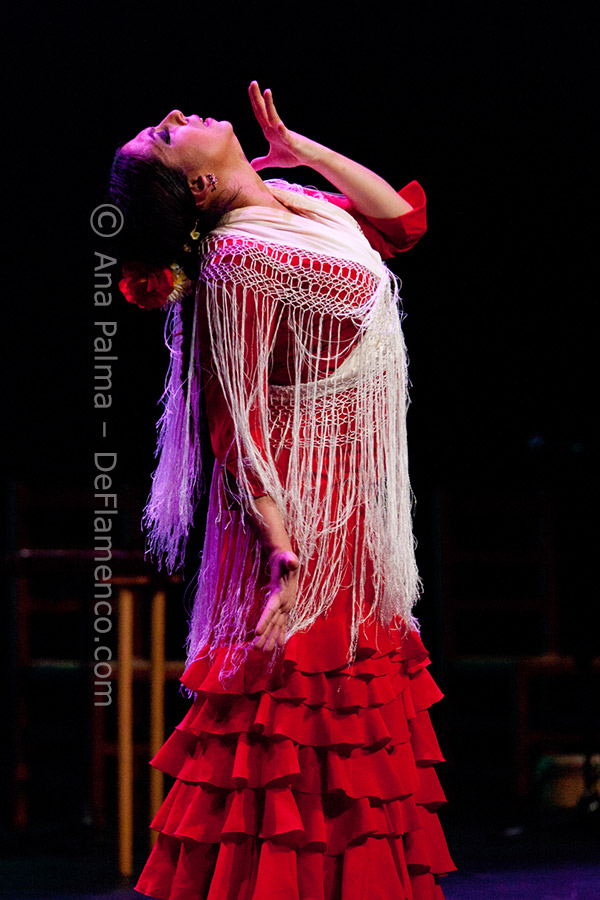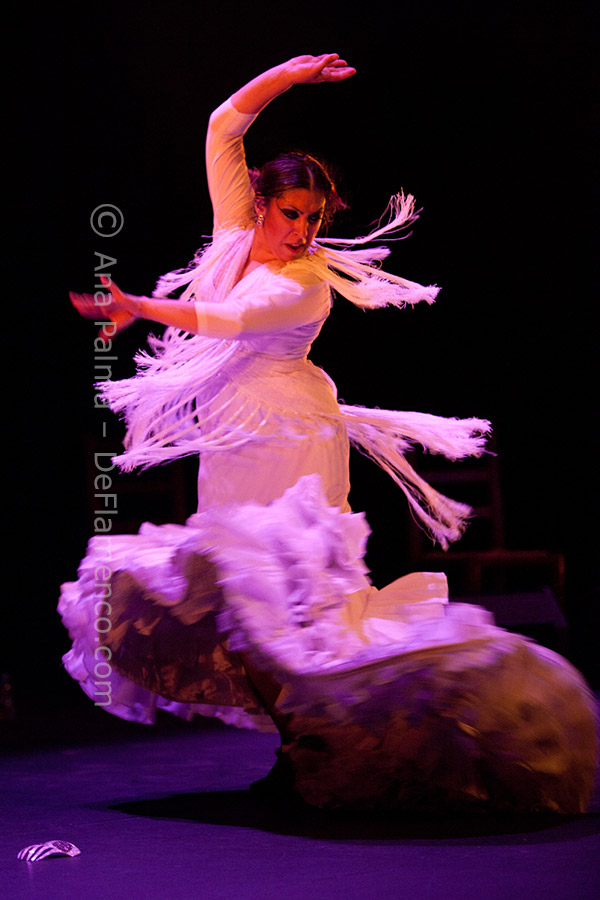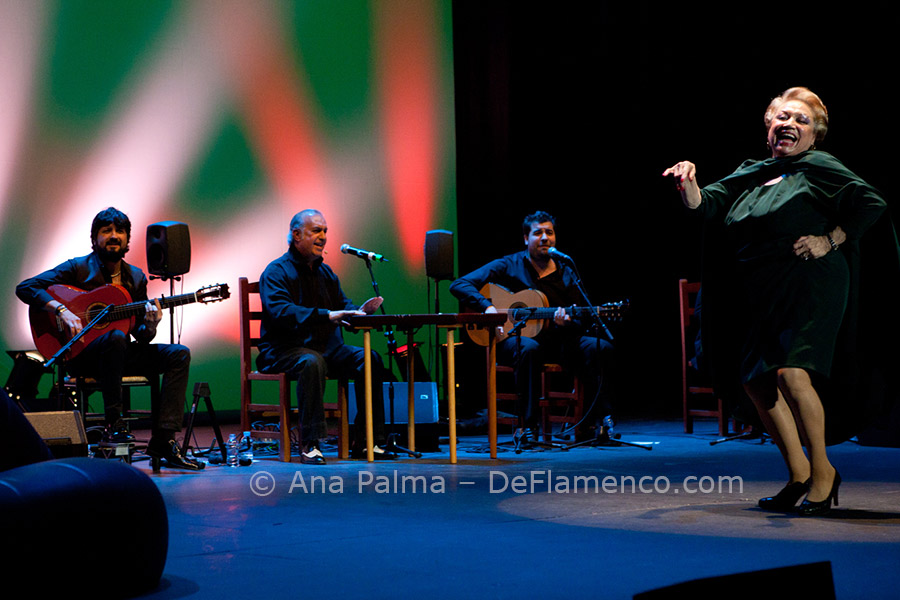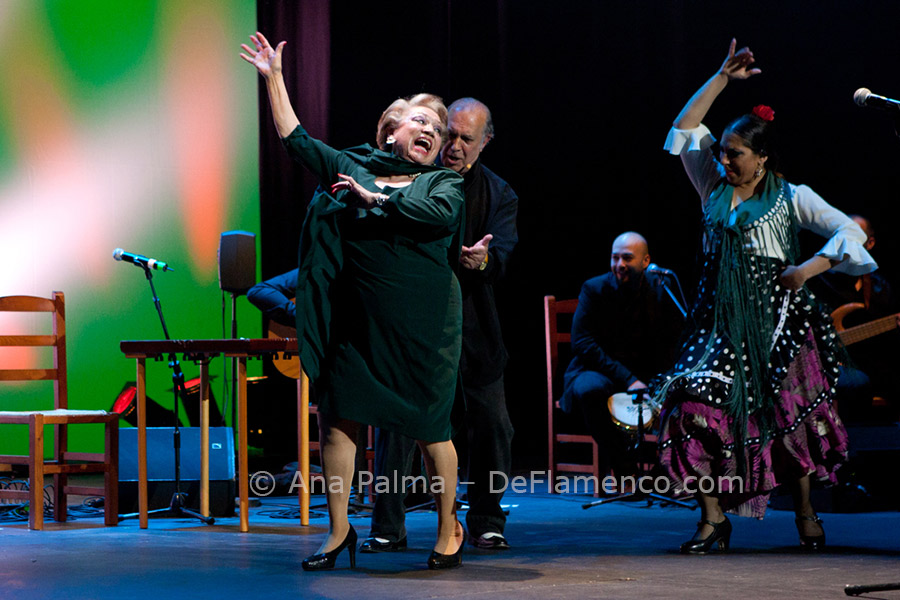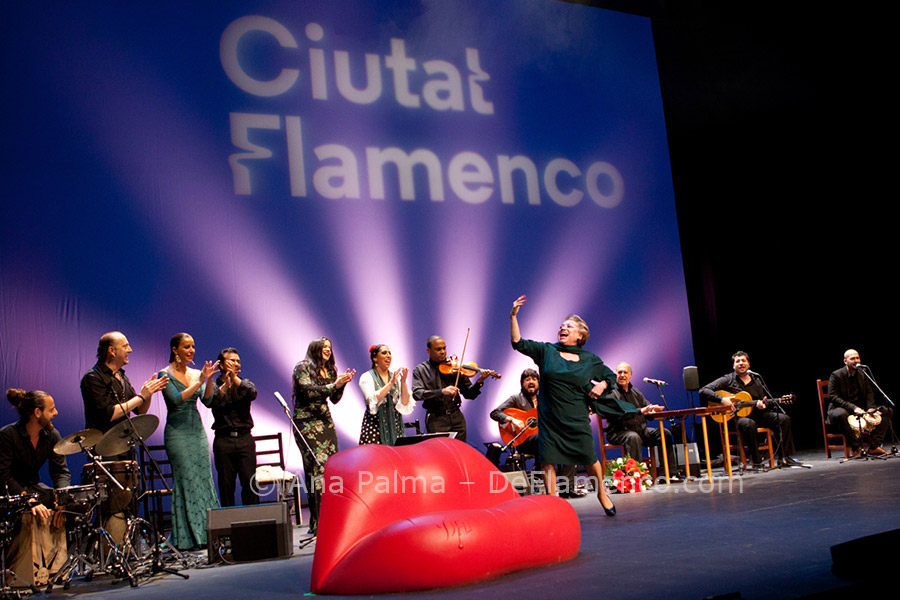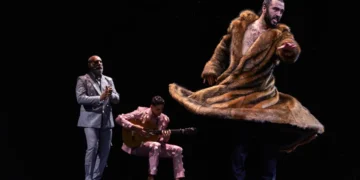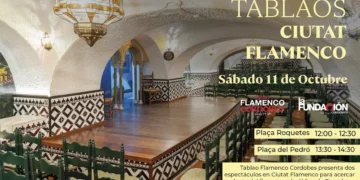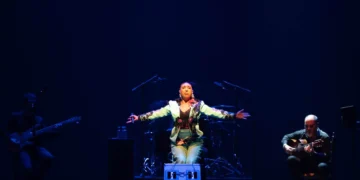Text: Silvia Cruz Lapeña
Photos: Ana Palma
At the Mercat de les Flors, May 22-25, a new edition of Ciutat Flamenco was held with Eva Yerbabuena, Esperanza Fernández, Pastora Galván, Maruja Garrido…
The triumph of back-up performers
The scheduling of the Ciutat Flamenco festival held in Barcelona made it tough for the organization: sports finals on Saturday, and elections on Sunday. Something similar happened at the event which received the most diverse audience that applauded at times, and other times…didn’t.
Eva Yerbabuena’s “Ay” got off to a promising start: the Granada woman’s shows make a good match with the Barcelona audience, always open to new tendencies. Eva linked, but didn’t quite make a happy coupling between the contemporary and the traditional, and the result was a composition of isolated pieces which, with the lack of warmth, were begging for some kind of explanation. Strength in the footwork and legs, prodigious technique and the powerful countenance of Eva couldn’t make up for the lack of communication in a show that came off as an internal monologue. The audience applauded her talents which recently were worthy of the Max awards for best dance interpreter, and there was an emotional ovation, although the real heat of this show came from José Valencia, who sang as if it were the last performance of his life, making him the first backup musician of the festival to steal the show from the star he was accompanying.
The second case came in “Mi Voz en tu Palabra”, the show that Esperanza Fernández devoted to the poetry of José Saramago. The audience reaction was cooler than for Yerbabuena, and they were unmoved by Esperanza who sang well, but brought a show that was lacking in flamenco spice, rage, fire. For that, we had Pastora Galván, who participated with two dances, and thanks to her exquisite “working class” movements which have become her trademark, she got the audience eating out of the palm of her hand. Pastora stole the show from Esperanza, and shared it with Miguel Ángel Cortés, who at this stage no longer plays the guitar but rather possesses it. The solo piece he played while Esperanza changed costume, got the audience to their feet.
And then there was rumba…
On Saturday it was fiesta-time at the Mercat de les Flors with “Rumba Surreal”, a tribute to Maruja Garrido who had been the muse of Salvador Dalí, and to the unbridled rumba this woman practiced unmatched for the 20 years she was the star of the Los Tarantos club. We had to wait nearly an hour and a half for her to appear, more than enough time for the secondary musicians to take over the stage and make it their own. Joaquín el Duende pulled it off thanks to his depth and intensity, and Fuensanta la Moneta who she showed her gift of doing the furious warrior. The dancer’s interventions, to the compás of Chicuelo’s guitar, fine and clean, split the seams of the floor and proved that this woman has raw talent running through her body. Hands, face, waist, hips, legs and feet: Fuensanta uses everything. The siguiriya with bata de cola was sheer madness, and it was hard to get her out of your mind even after Maruja came on stage to remind us with her voice that she is still a stage animal.
Maruja sang and danced with the abandon only she knows, and showed that, more than surrealistic, she’s pure explosive carnality. Her strength and her backup managed to work the audience into a lather, and made this show the most entertaining of the festival.
Good activities, bad sound
The parallel program of the Ciutat Flamenco can always count on a voraciously curious audience, which this year had a roaring good time. Salao offered his vocal magic in the Barcelona underground, and in the workshop of introduction to flamenco with Juan Carlos Lérida, the new glossary of flamenco was laid out as sign language.
However, the sound was a problem, and many musicians complained throughout the festival. This is a detail that must be taken care of, and the same could be said about the manner in which this type of festival opens and closes. Although Eva Yerbabuena had her low points in the opening, she is a tremendous artist who dignifies any program. Such was not the case in the closing which, though not lacking in beauty, was inappropriate and lacking in depth.
The closing
“Les Trinxeres del 1714”, within the framework of concerts for the tercentennial organized by the Generalitat de Catalunya, was presented as a tribute to the lowest social levels in Barcelona during the war of 1714. Enric Palomar was the music director, and created a wonderful score to which Pere Martínez put his voice with especially moving depth. But the show only had three compositions based on the announced theme, and then went directly on to standard verses and forms of the traditional flamenco repertoire. To reinforce the association with the rest of the show, things were done such as Caracol’s “Carcelero” as a tribute to “impotence and freedom”, and not as the elegy of a jealous man; “gaditanas” became “catalanas” in the verse of alegrías, and poems of Narcís Comadura and Joan Brossa were set to flamenco, both marvelously interpredted by Martínez, but leaving us with the feeling that flamenco was just being grabbed by the fringe.
Pere was much applauded, and he gave his all in each piece. But again, others stole the spotlight: Elisabeth Gex with her viola, David Domínguez on percussion and Juan Carlos Gómez with his guitar all enjoyed their instruments and accompanied the singer with tender loving parental care.
That much applause called for an encore which materialized to close the trenches and the festival to the sound of “Pena, penita, pena”.
Descubre más desde Revista DeFlamenco.com
Suscríbete y recibe las últimas entradas en tu correo electrónico.


